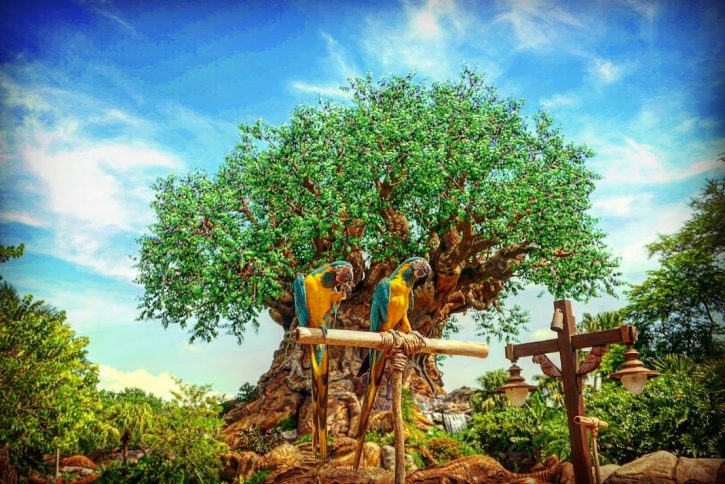
Disney’s Animal Kingdom Park opened on Earth Day in 1998. There are so many Animal Kingdom Fun Facts to learn about.
General Facts
- While planning Disney’s Animal Kingdom Park, a core team of seven Walt Disney Imagineers, led by executive designer Joe Rohde, crisscrossed the globe in search of the essential look of life in the wild, amassing more than 500,000 miles . . . a distance equal to circling the globe 20 times.
- Sixty dump trucks delivered dirt to Animal Kingdom’s construction site every day for two years straight. It equaled 4.4 million cubic yards of dirt.
- Some 1,500 2-to-3-foot long fanciful hand-painted wooden folk art animal carvings — a fusion of pre-Columbian, Peruvian, African, and Polynesian forms — were crafted on the island of Bali by native craftsmen, and can be seen adorning the architecture of Discovery Island.
- More than 4 million trees, plants, shrubs, ground covers, vines, epiphytes, and grasses from every continent on Earth — except Antarctica — were planted.
- The largest tree replanted in the park is currently located in Harambe Village and tipped the scales at 90 tons, which is equal to the weight of 16 male elephants.
- There’s one million square feet of rockwork found at Disney’s Animal Kingdom; that’s twice the volume of rockwork of the Mt. Rushmore sculptures. It’s also a volume that could create a monolith 10 feet by 10 feet by two miles high.
- There are 27 million gallons of water in Discovery River; an amount equal to 1,800 average-sized backyard swimming pools.
- There are 2.6 million gallons of water contained in various water features that come in contact with animals. The entire volume of water gets treated and filtered five times daily, totaling 15.6 million gallons each day.
- Walt Disney’s love of animals began when he was four years old and his family moved from his Chicago birthplace to a 45-acre farm in Marceline, Missouri, where he helped take care of farm animals. This is where he also learned to draw pictures of his animal friends.
Facts About the Tree of Life
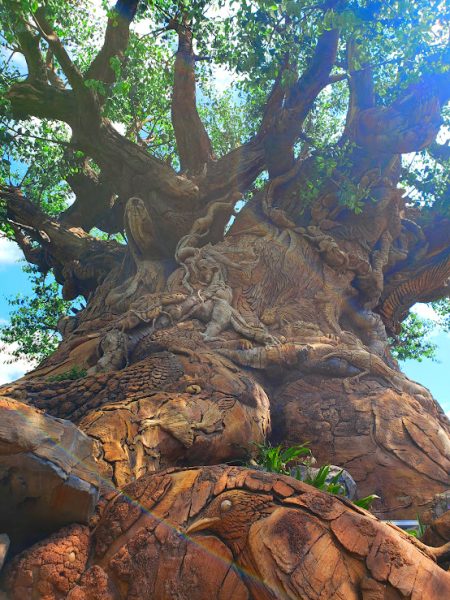
- Ten artists and three Imagineers worked full-time for 18 months to create the 325 animal carvings found on The Tree of Life. Sculptors had to work fast. They had anywhere between six and 10 hours to create the finished image before the plaster hardened.
- There are more than 103,000 transparent, five-shades-of-green leaves that blow in the wind on The Tree of Life.
Kilimanjaro Safari Facts
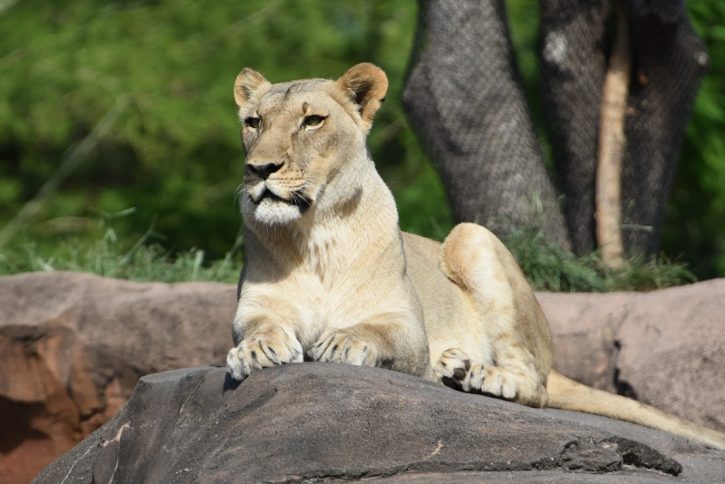
- Planting at Kilimanjaro Safari was a challenge. With a ride-through attraction and live animals roaming about, planting patterns were based on what designers thought the animals would do, and what the guests will experience. Paul Comstock, principal landscape architect, laid out the plant bed lines on a motorcycle (using spray paint) riding at the same speed as the ride vehicle, “because guests will experience the landscape at that speed,” he said.
- The rutted safari road also is part of the landscape design. Imagineering’s design team matched concrete with the surrounding soil, then rolled tires through it, and tossed stones, dirt, and twigs into it to create an appropriately bumpy experience duplicating a remote African road.
- Like an African safari snapshot, the Serengeti features towering acacia trees and tall grasses on rolling landscapes. However, this is Central Florida, not East Africa, and the acacias are really 30-foot-tall Southern live oaks with a close-cropped crew cut.
Dinoland U.S.A. Facts
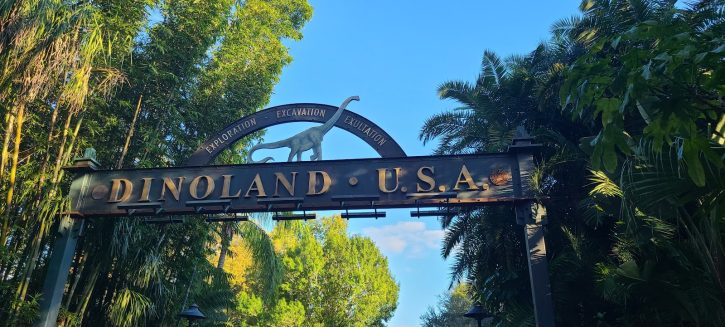
- In order to support the incredibly large and sophisticated Audio-Animatronics at DINOSAUR, their dino-size bases were built clearly through the structure down to their own large foundations in the ground.
- The cycad collection along the Cretaceous Trail represents the third largest such collection in North America. This includes ferns, mosses, conifers, broadleaf plants, and the first flowering plants on Earth, dating back hundreds of millions of years.
Expedition Everest Facts
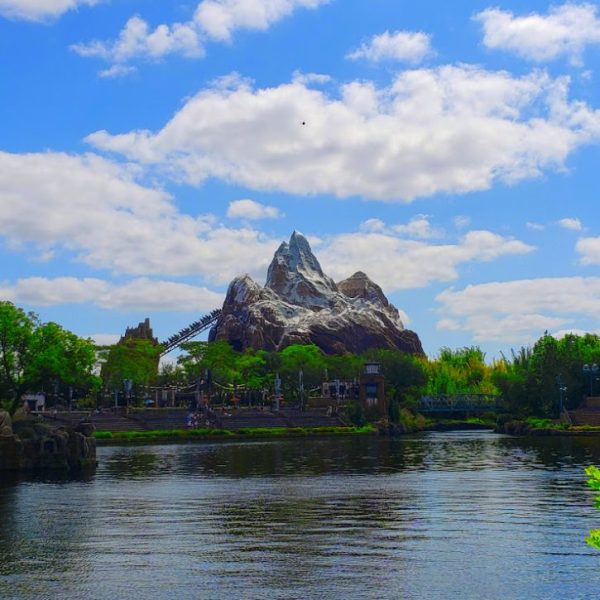
- The attraction is a perilous journey aboard a runaway train through the Himalayan mountains. Adventurous riders push deep into the lair of the feared yeti, guardian of the forbidden mountain. En route, they encounter torn tracks, spiral backwards through the fog into an ice cavern, and dart into and out of the mountain in a high-speed adventure.
- The mountain peak is just under 200 feet, making Expedition Everest the tallest of the 18 mountains created by Disney Imagineers at Disney parks worldwide.
- The attraction includes an 80-foot drop, plus frightening encounters with the mystical yeti.
- There is nearly a mile of track as riders encounter harrowing twists, tight turns, and drops.
- Modeled after an aging, steam-engine tea train, they fit 34 passengers per train.
- To create the sense of an enormous mountain range, Imagineers painted a “mural” of shadows across the face of the mountains. The range with its glaciers and valleys is a canvas of rockwork, carvings, and painting creating a forced perspective.
Animal Facts
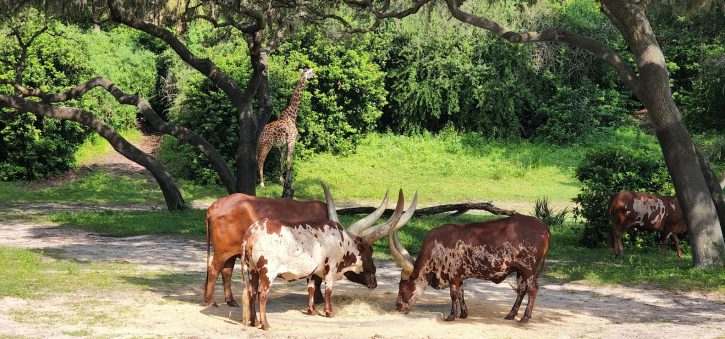
- To keep 1,000 animals happy, it takes about four tons of food a day; that’s a four-and-a-half-year supply for the average person.
- Disney’s Animal Kingdom Park is home to the largest groups of Nile hippos and African elephants in North America.
- The first birth at Disney’s Animal Kingdom was a kudu, a large African antelope.
- The number of species that have reproduced since the park opened is more than 150.
- Six Micronesian Kingfisher chicks hatched at Disney’s Animal Kingdom. This helped to increase the world population of these birds by 9 percent.
- The arrival of two black rhino calves, which were born at Disney’s Animal Kingdom Park. It made them two of only 200 in captivity worldwide.
- Animal Programs veterinarians performed successful surgery on a tarantula spider, placed an artificial eye in a fish. Also, they removed a golf ball from a hungry snake that Cast Members rescued at a Disney golf course.
- The Animal Programs team performs more than 600 wellness checks per year.
- Lab technicians have analyzed more than 10,000 samples of animal poop since Disney’s Animal Kingdom Park opened.
- The animals are fed over 2,000 pounds of vegetation and various types of worms daily. The amount of worms fed to animals equals 40,000 in a week! Dieticians also order 80,000 crickets per month as part of a healthy diet for the animals.
- Disney Animal Kingdom scientists have discovered two new vocalizations never before reported in elephants.
- Since 1995, the Disney Wildlife Conservation Fund has devoted more than millions to conservation efforts around the world and has supported hundreds of projects.


